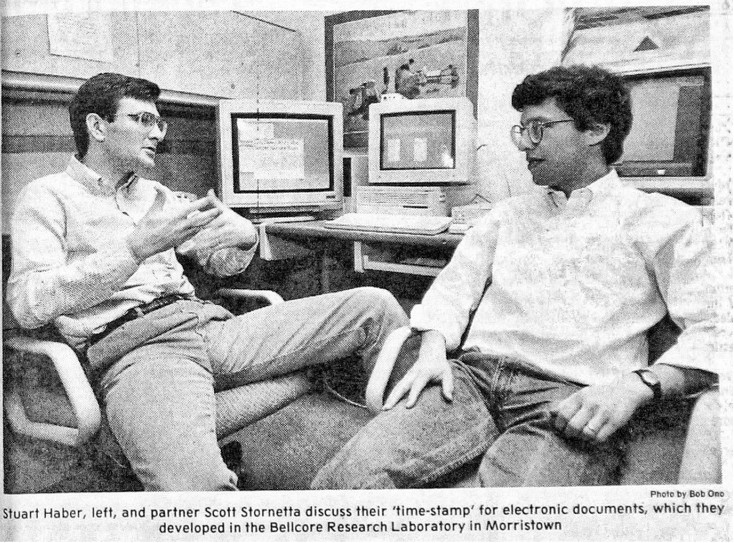The blockchain is an integral component of cryptocurrency, as many of you may already know. Industries such as manufacturing and business services are embracing this technology and the demand is on the rise. But this technology was relatively unknown in 2008.
Blockchain technology without a doubt is one of the most discussed technologies of the last few years. The history of blockchain technology can be traced back to the early 1990s before web 1.0 was introduced. Today people are realizing its advantages, governments and organizations are making efforts to incorporate this technology to meet essential needs. Startups are coming up with problem-solving solutions as they race to become the next big thing.
But, what is blockchain in simple terms?

A blockchain is just a ledger that keeps track of accounts carrying classified information. But it is not like a ledger that was used earlier in banks, but a ledger that is public, digitally distributed, and decentralized.
As Wikipedia says ‘ A blockchain is a growing list of records ( or a chain of records ), called blocks. Each block contains a cryptographic hash of the previous block, a timestamp, and transaction data (generally represented as a Merkle tree).’ What it says is that each of the blocks contains information of the previous block in the form of a hash ( The algorithm that takes an arbitrary amount of data and returns a fixed size of data called a hash ). It also keeps track of the time of the transaction data when the block was first published.
Each of the blocks contains information about the previous block as they form chains. If one attempts to change any information within a block he has to modify the information in each block. For this reason, it is nearly impossible to change any data within a block without altering data in the next block.
The brief history behind the blockchain technology
The year 1991-1992 – Stuart Haber and Scott Stornetta

It was the early 1990s, Web 1.0 was gradually making its way into the homes and offices. Two scientists named Stuart Haber and Scott Stornetta were working at the Bell core labs, Livingston, New Jersey. Moreover, they were working together on a project. Their first task involved building a cryptographically secured sequence (chains) of blocks in such a way that no one can modify the timestamp related to each document. In 1992 they upgraded the whole system so that they can add more documents within the same block.
The year 1998 – Nick or Nakamoto

Some people in silicon valley started to hear a new phrase, ‘Bit Gold’. It was one of the earliest attempts at creating decentralized virtual currency proposed by Nick Szabo. Nick was one of the pioneers of blockchain technology. Many still say that Nick Szabo was the real person with the nickname, Satoshi Nakamoto. Though he busted all the rumors as fake.
The year 2000 – Theory by Stefan Konst
Stefan Konst publishes his unified theory of cryptographically secured chains, plus ideas for implementation. According to his work, an unauthorized person couldn’t be able to manipulate blocks unnoticed or remove corners or edges without manipulating other blocks.
The year 2008 – Nakamoto and his infamous white paper

The time when Satoshi Nakamoto came into the picture. During this time a domain name bitcoin.org was registered and web site at that address was created. On 31 October, Nakamoto published the infamous white paper on the cryptography mailing list at metzdowd.com. It described a digital cryptocurrency, titled “Bitcoin: A Peer-to-Peer Electronic Cash System”. Bitcoin came into the paper as the first application of blockchain.
The year 2009 – The first Bitcoin

Nakamoto mined the first bitcoin block. The first block had 50 bitcoins and was known as the ‘Genesis block. The mining was followed by the first bitcoin transaction as Nakamoto sent 10 bitcoins to Hal Finney in block 170.
The story thereafter
The drop in Bitcoin’s reputation and Nakamoto’s sudden disappearance
In August 2010, a hacker took advantage of a bug in the blockchain code and created more than 184 billion bitcoin in block 74,638. It tarnished the reputation of bitcoin temporarily. Following this, Nakamoto published a new version of the bitcoin software, but by the end of the year, he disappeared from the bitcoin scene completely.
The Vitalik effect

Vitalik Buterin, a Russian-Canadian programmer along with his fellow partner Mihai Alisie launched Bitcoin Magazine and published their first issue in May 2012.
In the subsequent years, Bitcoin became popular as Coinbase reported selling 1 million $ worth of bitcoin. By this time the currency’s total valuation exceeded 1 billion $.
But something happened which was not at all good news for the cryptocurrency. Both Thailand and China banned cryptocurrencies. The U.S. Federal Court seized Mt. Gox’s funds in the U.S. and the FBI shut down Silk Road, confiscating 26,000 bitcoins.
It was a serious blow to the whole crypto community. But it was during this time one of the most important events in blockchain’s history occurred. Vitalik Buterin, the co-founder of Bitcoin Magazine, published a white paper proposing a decentralized application platform. This led to the creation of the Ethereum Foundation, which launched in 2014.
Ethereum paved the way for blockchain technology to be used for purposes other than cryptocurrency for the upcoming future. It introduced smart contracts and provided developers all around the world with a platform for building decentralized applications. It formed the foundation for the Non-Fungible Tokens (NFTs) and Decentralized Finance (Defi) you see today.
In the next few years, blockchain gained more popularity as financial institutions and other industries began to recognize the potential of the technology. Several companies like the Chicago Sun-Times, Overstock.com, Microsoft, PayPal, and Expedia began to accept bitcoin by the year’s end of 2014.
Looking ahead
According to some people, blockchain technology is the most significant innovation seen by Humanity ever since the Internet itself. Some think that it will pave the future of humanity.
The digital world has already been swept up by terms like Metaverse, NFT, and Web 3.0. However, it will still take some time for these terms to make a mass impact. But blockchain technology has shown some promising applications in the field of the medical industry, data storage, energy-storing, etc. But, it has to overcome some challenges like trust, high cost of production. Furthermore, blockchain’s centralization may excite some, but a corollary will argue that it is nothing more than a new form of centralization.
Many experts believe that blockchain technology is still years ahead. We need to keep an active eye on how things unfold in the coming years. One thing is sure that blockchain technology is here to stay as it brings along a load of applications and lots of opportunities. The technology will only improve, as universities, governments, and private corporations continue to research and invest in blockchain. But addressing the challenges that blockchain brings should be the first concern — particularly regarding security, privacy, scalability, and interoperability.
Follow @OfficialSoumenD Tweets by OfficialSoumenD